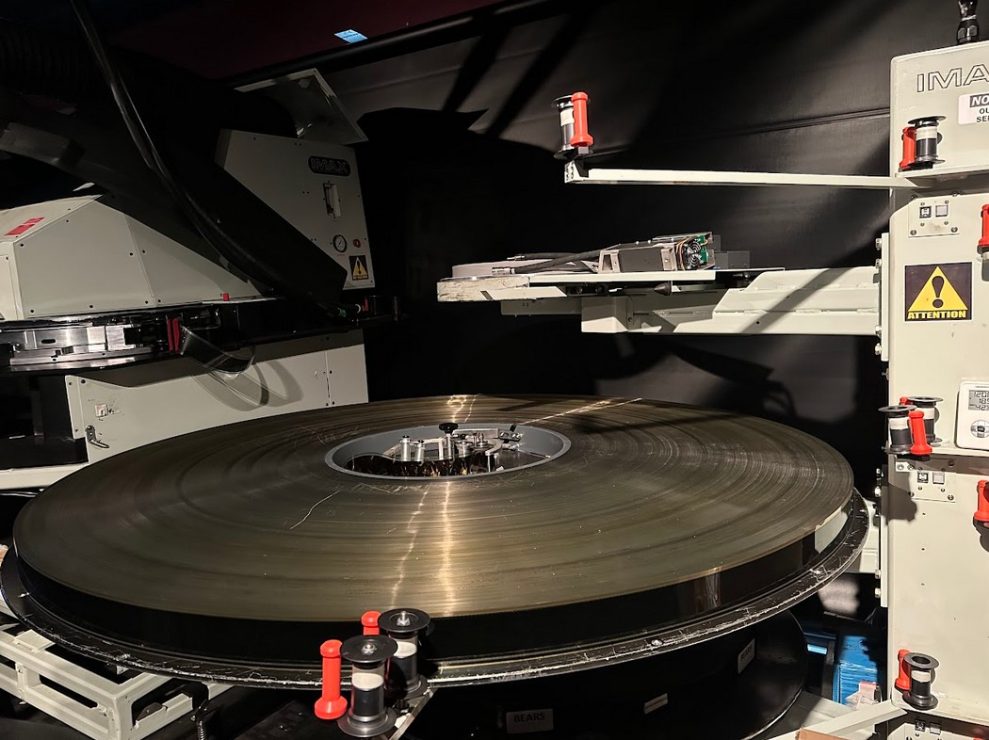A review of an afternoon at the Royal BC Museum

Photo by Sydney Lobe.
On Tuesday, June 6, I visited the Royal BC Museum (RBCM) to watch the IMAX showing of Angkor: The Lost Empire of Cambodia.
Kathleen Cowl, IMAX sales membership coordinator at the RBCM, introduced herself to me simply as Katie and offered me some popcorn before the show began.
She asked me if I had seen an IMAX before, and when I answered no, a look of bewilderment struck her. A wide smile followed.
“Well, you’re in for a treat,” she said.
I followed one or two families, a few elderly couples, and a middle school field trip group — just the sort of audience you might expect for a film screening at 11 a.m. on a Tuesday — into the theatre. I chose a seat near the middle, and a low, clear voice over the loudspeaker explained that the screen in front of me was six storeys high.
The IMAX screen really was something to behold. Using the largest commercial film ever invented, their frames are ten times larger than the film screened in regular cinemas, creating an unrivalled sharpness of image.
Angkor:The Lost Empire of Cambodia, sitting at a forty-minute run time, covered a lot of ground.
The empire, which spanned much of what is now modern-day Laos, Cambodia, Thailand, and Vietnam was home to a marvel of engineering: The largest pre-industrial urban hub in the world, Angkor, which contained the largest religious monument in the world, the Angkor Wat.
Carbon dating tells us that the partially-constructed ruins of Angkor were abandoned at once, closely preceding the southern migration of the empire’s people. The question of why is the concern of the archaeologists who occupy Angkor today — one of the largest and most important archaeological sites in the world.
These archaeologists suggest that changes in the climate between monsoon and drought seasons led to a collapse in Angkor’s water network and, ultimately, the fall of the empire itself.
This, to me, was the crux of the film.
Today, we are living through unprecedented climate crises. We are all familiar with warnings about great quakes, cyclones, and torrential downpours; heat domes, and wildfires. Archaeologists in the film suggested that the study of Angkor’s degrading structures can teach us about implementing climate disaster resistance in modern infrastructure.
Sustainability and the climate crisis became unexpected themes in my visit to the RBCM.
Upstairs in the projection room, I met Jason St-Louis, chief projectionist at IMAX Victoria. He was generous enough to show me around the booth and explain the technicalities of running an IMAX show like Angkor.
The projection room boasted a machine for queuing shows, a sound board where audio technicians came to compose the scores for the IMAX features in house, and a dozen or so other gizmos that I was careful not to touch.
One machine that we paid special attention to was a monstrous grey box with a blue IMAX logo on its side. This, St-Louis explained, was the projector. It worked by using many powerful lasers to project a perfect, crisp IMAX-quality image onto the screen. There were two windows in the booth, one of them directly in front of the projection machine. He cautioned me to avoid looking directly into the projector’s aperture, before we continued with the tour.

Photo by Sydney Lobe.
IMAX had gone digital in 2017, abandoning the use of film except in special circumstances, like if they were showing a Christopher Nolan feature — Nolan insists on shooting on film.
Conveniently, the 800-pound film reel of the movie Interstellar was on display behind the projection machine, “just for show,” St-Louis clarified. They had kept a relic of the past in the booth, while the remaining 20 000 pounds worth of stored reels had to be disposed of following the great IMAX digitization of 2017.
St-Louis explained that, following an unsuccessful attempt at recycling the films into plastic, they ended up being recycled into a finely ground concrete mixer. St-Louis caught wind from a friend that the mixer might have been used in the concrete that repaired massive B.C. flood damage a few years back.
I found this alleged fact so poetic that I could hardly concentrate on the conversation at hand after I heard it. I was completely taken by the undeniable symbolism of art as infrastructure post-disaster.
In this way, the theme of sustainability persisted. I left the booth preoccupied by St-Louis’ story and, unrelated, worried that I had somehow accidentally looked through the laser window and compromised my vision.
My visit was punctuated by a viewing of the museum exhibit — a travelling exhibition of 120 artifacts from Angkor, making its first stop in Canada. Katie and I chatted our way through the display of ancient artifacts that had been preserved through seasons of climate devastation, and when we came to the end, said goodbye.
For the rest of the day, I felt a strong pull toward the poetic idea that the key to implementing structural mechanisms of sustainability might be found in our history. I savoured the feeling of sincere hope for the future, and the assuring reminder that on any given day’s adventure, a new perspective might just be waiting for me.








